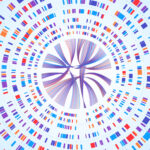After walking away from cell therapy and narrowing its focus to just three modalities, Takeda is doubling down on its remaining strategic commitment by reupping a pact with AI drug designer Nabla Bio.
Nabla, a Harvard spinout from the lab of George Church, Ph.D., will receive an upfront payment in the double-digit millions, according to an Oct. 14 release, with the chance to net more than $1 billion in milestones down the line.
The multiyear agreement builds on a prior deal announced in May 2024, when Nabla unveiled deals with AstraZeneca and Bristol Myers Squibb alongside a $26 million series A.
The new project will use Nabla’s Joint Atomic Model (JAM) across Takeda’s early-stage programs, according to the release, to generate new antibodies, multispecifics and other therapeutics for multiple targets at once.
“Since 2022, we’ve collaborated with Takeda to push the boundaries of next-generation biologics discovery,” Surge Biswas, Ph.D., Nabla’s CEO and co-founder, said in the release. “This second collaboration builds on the success of our first program and reflects our shared conviction that de novo design and AI-driven optimization, powered by foundation models like JAM, can unlock entirely new therapeutic spaces.”
Related
Takeda tapped out of the cell therapy arena just a couple of weeks ago, with the Japanese pharma declaring its focus would now be on new small molecules, biologics and antibody-drug conjugates. The drugmaker laid off 137 employees at its Massachusetts R&D site as part of the shift.

“Building upon the success of our first engagement with Nabla Bio, this collaboration applies their cutting-edge AI and wet lab to help us design and optimize protein therapeutics for applications across our therapeutic areas,” Takeda’s chief scientific officer and research head Chris Arendt, Ph.D., said in the release.
Takeda’s main therapeutic areas are gastrointestinal and inflammation, neuroscience, oncology, and rare genetics and hematology, according to the company’s website. Ditching cell therapy leaves Takeda with just four oncology assets, all of which are licensed from or partnered with other companies.
Biswas and fellow co-founder Frances Anastassacos, Ph.D., spun Nabla out of Church’s lab in 2021, with Church himself serving as the academic co-founder. In May, Nabla shared that it had used JAM to design new antibodies for hard-to-drug G-protein coupled receptors (GPCRs), including a cancer-related GPCR called CXCR7.



